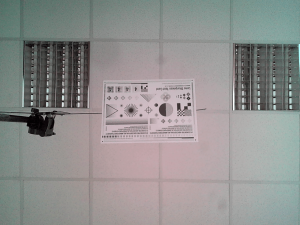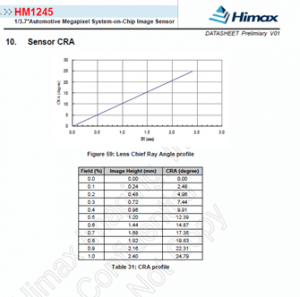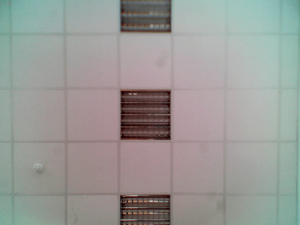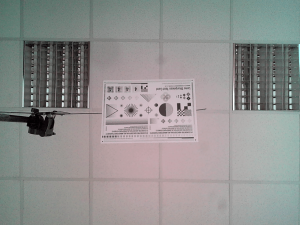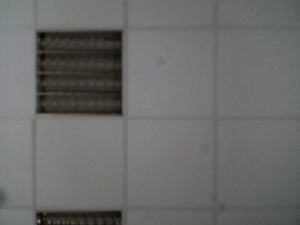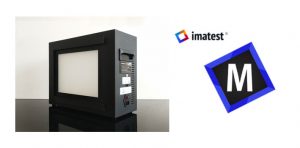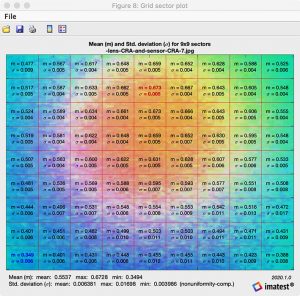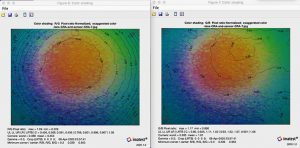CRA = chief ray angle. The effect of the sensor receiving light is related to the sensor itself, and on the other hand, it has a great relationship with the angle of light incident on the Sensor. CRA is associated with illumination on the original photographic film, and if the efficiency of the light on the CMOS or CCD sensor is not only related to the CRA, it is also related to the Sensor’s Micro Lens opening layout. Therefore, when doing Lens design CRA to meet the sensor manufacturers to provide the CRA reference value, so as to match their Sensor layout, improve the efficiency of light reception.
CRA=主光线角度。传感器接收光的效果与传感器本身有关,另一方面与光入射到传感器上的角度有很大关系。CRA与原始胶片上的光照有关,如果CMOS或CCD传感器上的光的效率不仅与CRA有关,还与传感器的微透镜开口布局有关。因此,在进行镜头设计时,CRA要满足传感器厂家提供的CRA参考值,从而匹配自己的传感器布局,提高光接收效率。
The interface between the camera and the sensor is one of the most important interfaces in the entire camera system. As the length of the lens becomes shorter and shorter, the angle of light reaching the pixel position of the sensor will become ever greater. Each pixel has a micro lens. The main function of the micro lens is to focus light from different angles on this pixel. However, as the pixel position becomes more and more large, some light will not focus on the pixels, resulting in loss of light and reduced pixel response.
相机与传感器之间的接口是整个相机系统中最重要的接口之一。随着透镜的长度越来越短,到达传感器像素位置的光的角度将越来越大。每个像素都有一个微透镜。微透镜的主要功能是将不同角度的光聚焦在这个像素上。然而,随着像素位置越来越大,一些光不会聚焦在像素上,导致光的损失和像素响应的降低。
The angle of light entering each image will depend on the position of the pixel, and the light near the lens axis will enter the pixel at a nearly zero angle as the distance from the axis is larger and the angle becomes larger. CRA is associated with the position of the pixel in the sensor.
进入每个图像的光的角度将取决于像素的位置,并且随着距轴的距离增大和角度增大,靠近透镜轴的光将以接近零的角度进入像素。CRA与传感器中像素的位置相关。
From the lens side of the sensor, the maximum angle of light that can be focused onto the pixel is defined as a parameter called the (CRA). The general definition for the main light angle is that the pixel response at this angle is reduced to 80% of the zero angle pixel response (in this case, the pixel is perpendicular to the ray).
从传感器的镜头侧,可以聚焦到像素上的最大光角度被定义为一个称为(CRA)的参数。主光角的一般定义是,该角度的像素响应降低到零角像素响应的80%(在这种情况下,像素垂直于光线)。
The angle at which the light enters each pixel will depend on where the pixel is located. The light near the lens axis will enter the pixel at an angle close to zero. As it increases with the axis line, the angle increases. CRA is related to the position of the pixel in the sensor, and the relationship between them is related to the design of the lens. Very compact lenses have a very complex CRA mode. If the lens’s CRA does not match the sensor’s microlight design, there will be an undesirable light intensity through the sensor (ie, “shadow” pink glow). By changing the micro-lens design, and the image to the appropriate processing, you can greatly reduce this phenomenon.
光线进入每个像素的角度将取决于像素的位置。镜头轴附近的光线将以接近零的角度进入像素。随着轴线的增大,角度也随之增大。CRA与像素在传感器中的位置有关,它们之间的关系与镜头的设计有关。非常紧凑的镜头有非常复杂的CRA模式。如果镜头的CRA与传感器的微光设计不匹配,则会有不希望的光强度通过传感器(即“阴影”粉红辉光)。通过改变微透镜的设计,并对图像进行适当的处理,可以大大减少这种现象。
Changing the micro lens design can greatly reduce the shadow phenomenon and pink glow. However, in changing the microlens design, you must work closely with the lens designer to find the appropriate CRA mode for the various shots. The camera’s design engineer should ensure that this technical cooperation is achieved and that the sensor and lens CRA characteristics are well matched. To ensure the success of this goal, Micron developed the relevant simulation tools and evaluation tools.
改变微透镜的设计,可以大大减少阴影现象和粉光。但是,在更改微透镜设计时,您必须与透镜设计师密切合作,以找到适合各种镜头的CRA模式。摄像机的设计工程师应确保实现这一技术合作,并确保传感器和镜头CRA特性良好匹配。为确保这一目标的成功,美光公司开发了相关的仿真工具和评估工具。
As the light is incident along the different angles on the sensor, so for a variety of miniture lensesdesign, the shadow phenomenon is inherent. “Cos4 law” shows that the reduced light is proportional to the quadratic of increasing the angle cosine. In addition, in some cctv lens design, the megapixel lens itself may block part of the light (known as “halo”), which will also cause shadows. So, even if the micro-lens design can minimize the shadow of the short lens phenomenon, this phenomenon will still exist more or less. In order to provide the camera designer with additional methods to correct shadows, the embedded image processor in the MT9D111 contains shadow correction, which is tailored for certain specific shots.
由于光在传感器上沿不同角度入射,所以对于各种微型透镜设计,阴影现象是固有的。“Cos4定律”表明减少的光与增加角余弦的二次方成正比。此外,在一些央视镜头设计中,百万像素镜头本身可能会挡住部分光线(称为“光晕”),这也会造成阴影。所以,即使微透镜的设计能够最大限度地减少短透镜的阴影现象,这种现象还是会或多或少地存在。为了给相机设计者提供额外的阴影校正方法,MT9D111中的嵌入式图像处理器包含阴影校正,它是为特定的镜头量身定做的。
To help design engineers integrate sensors into their products, Micron offers a variety of development software for all of its sensor products. By using these software, the camera design engineer can simplify the modification of the various chip feature defaults. The results of each change can be displayed on a PC monitor. For many cameras used in the camera, through the use of this development system, you can correct the lens shadows and spatial color distortion parameters set. By using a uniformly lit white object, you can simply set the response process for a simple test. The software development tool can display the results of the analysis of the shadow phenomenon. After that, the engineer can use the regional method to apply the correction value. The register settings for the calibration process will be stored in the development system for the camera design.
为了帮助设计工程师将传感器集成到他们的产品中,美光为其所有传感器产品提供了多种开发软件。通过使用这些软件,相机设计工程师可以简化对各种芯片特性默认值的修改。每次更改的结果都可以显示在PC监视器上。对于相机中使用的许多相机,通过使用本开发系统,可以校正镜头阴影和空间色彩失真参数集。通过使用均匀亮起的白色对象,您可以简单地为一个简单的测试设置响应过程。软件开发工具可以显示阴影现象的分析结果。之后,工程师可以使用区域方法应用修正值。校准过程的寄存器设置将存储在相机设计的开发系统中。
Three important parameters for selection lens and sensor:
1.ccd lens or cmos Lens the Image Circle with the sensor’s diagonal;
2.Sensor’s Pixel Size;
3.CRA.
These three parameters are the primary considerations for Lens and Sensor selection.
When you choose lens and sensor,you can get the CRA information from the cctv lens manufacturer. One of the cases which our client choose the lens,Our clients has a CMOS images in hand,It shows that HIMAX sensor has CRA about 24.79 degs
选择镜头和传感器的三个重要参数:
1.ccd镜头或cmos镜头传感器对角线的图像圆;
2.传感器像素大小;
3.CRA。
这三个参数是透镜和传感器选择的主要考虑因素。当您选择镜头和传感器时,您可以从闭路电视镜头制造商处获得CRA信息,我们的客户选择镜头的案例之一:我们的客户手头有一个CMOS图像:结果表明,HIMAX传感器的CRA约为24.79 degs
We send two lenses to our client for testing.One is 2.81mm M6.5 mount lens ,it has CRA with 31 degrees. Test results:
我们送两个镜头给客户测试。一个是2.81mmm6.5安装镜头,它有31度的CRA。测试结果:
The other is 3.3mm M8 Mount Lens,it has CRA with 24.6 degrees,Test resultes:
另一个是3.3mm的M8安装镜头,它有24.6度的CRA,测试结果:
As the client needs a wider angel lens ,So they choose the the 2.81mm lens,and we fix the pink glow problems in the software.
由于客户需要一个更宽的天使镜头,所以他们选择了2.81mm的镜头,我们在软件中解决了粉红光班的问题。
General in the Sensor data sheet will be attached to the full field of view CRA reference value, different sensor manufacturers have different requirements, you can do this in accordance with this design reference. Some Sensor manufacturers in the public data table will not show out, but can ask with them. LENS and SENSOR generally require CRA curve error of +/- 2 degrees, of course, there are other aspects, which I also want to know.
一般在传感器数据表上会附上全视野CRA参考值,不同的传感器厂家有不同的要求,你可以按照这个设计参考来做。一些传感器制造商在公开的数据表中不会显示出来,但可以向他们询问。镜头和传感器一般要求CRA曲线误差为+/-2度,当然还有其他方面,我也想知道。
The CRA value of the Lens should be less than the Sensor’s Micro Lens CRA value, otherwise it will cause imaging illumination or color problems. The lens CRA is less than the SENSOR CRA or the lens CRA is close to the SENSOR CRA is the best, the lens CRA and the chip CRA is generally within three degrees. Requires high of 2 degrees Lens CRA does not match Sensor CRA Typical example of color cast: OV9655 / 53/50 Sensor When you use Lens TTL value below 5.0mm to determine the majority of the lens, carefully observe the imaging of the white Screen, you can see the whole picture will be color cast phenomenon.OVT for this problem improved after the Sensor model: OV9656.
透镜的CRA值应小于传感器的微透镜CRA值,否则将导致成像照明或颜色问题。镜头CRA小于传感器CRA或镜头CRA接近传感器CRA最好,镜头CRA和芯片CRA一般在3度以内。要求高2度镜头CRA与传感器CRA不匹配典型的彩色投射示例:OV9655/53/50传感器当使用镜头TTL值低于5.0毫米来确定大部分镜头时,仔细观察白屏的成像情况,您可以看到整张图片都会出现颜色投射现象。OVT针对这个问题改进后的传感器型号:OV9656。
Exceptions Pixelplus from VGA to UXGA Sensor with most of the same lens when the same problem, of course, this problem is also largely produced with the Sensor process
例外的是Pixelplus从VGA到UXGA的传感器在大多数镜头相同的情况下会出现相同的问题,当然,这个问题也很大程度上是由传感器过程产生的。
In the Sensor CRA curve, the vertical axis represents the main ray angle, the unit is the degree, the horizontal axis represents the field of view, there are two representations, one is expressed as a percentage, the maximum effective imaging height of 100%, generally 10% One is directly in mm, in turn from the Sensor center to the maximum imaging height position.
在传感器CRA曲线中,纵轴代表主光线角度,单位是度数,横轴代表视场,有两种表示,一种表示为百分数,最大有效成像高度为100%,一般10%的表示为mm,依次从传感器中心到最大成像高度位置。
The maximum effective imaging height of the Sensor is half of the Sensor’s effective imaging plane (diagonal)
传感器的最大有效成像高度为传感器有效成像平面的一半(对角线)
LENS and SENSOR CRA with is very important, but the current spread of the argument there are some wrong theory, now shows:
镜头和传感器的CRA配合是非常重要的,但目前流传的说法有一些错误的理论,现在说明:
- SENSOR has a CRA value, which is SENSOR MICRO high resolution lens with the location of the photodiode there is a horizontal error, not in a straight line, made such a certain purpose, according to the usual practice, because SENSOR MICRO LENS and photoelectric There is a certain distance between the diodes, so the purpose is to do with the good LENS.传感器有一个CRA值,即传感器的高分辨率透镜与光电二极管的位置存在水平误差,不在一条直线上,这样做是有一定目的的,按照惯例,因为传感器的微透镜与光电二极管之间有一定的距离,所以目的是为了使用好的镜头。
- 2.LENS also exists a CRA value, which in the LENS design is to consider the content, according to SENSOR CRA value of the design, the deviation is better within 2 degrees, too much, likely to cause lack of light and color cast.镜头中还存在一个CRA值,这在镜头设计中是要考虑内容的,根据传感器CRA值的设计,偏差最好在2度以内,过大,很可能造成光线和色彩的投射不足。
LENS CRA is not the smaller and the better, some people think that 0 is the best, it is not right, can only say that board lens CRA and SENSOR CRA closer and the better.镜头CRA不是越小越好,有人认为0是最好的,它是不对的,只能说板镜头CRA和传感器CRA越近越好。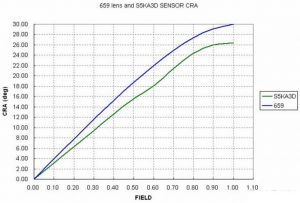
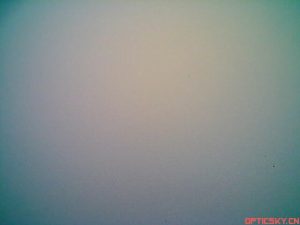
Color Non-Uniformity 的测试方法:
1. 测试设备: 使用LE005-D 多色温均匀透射光源以及Imatest图像质量分析软件。在不同色温和照度下拍摄均场图片,进行色彩不均匀性的分析。
